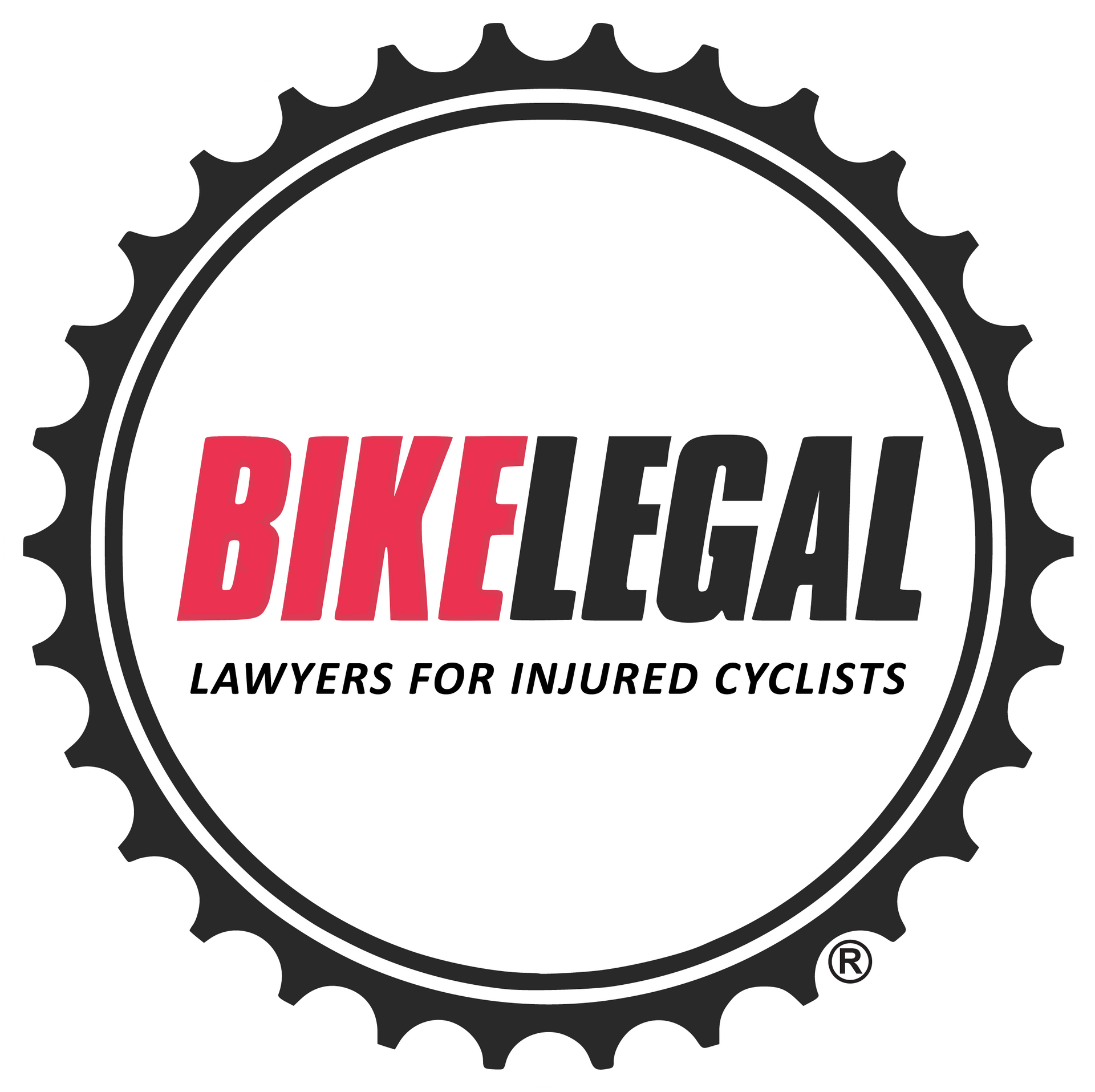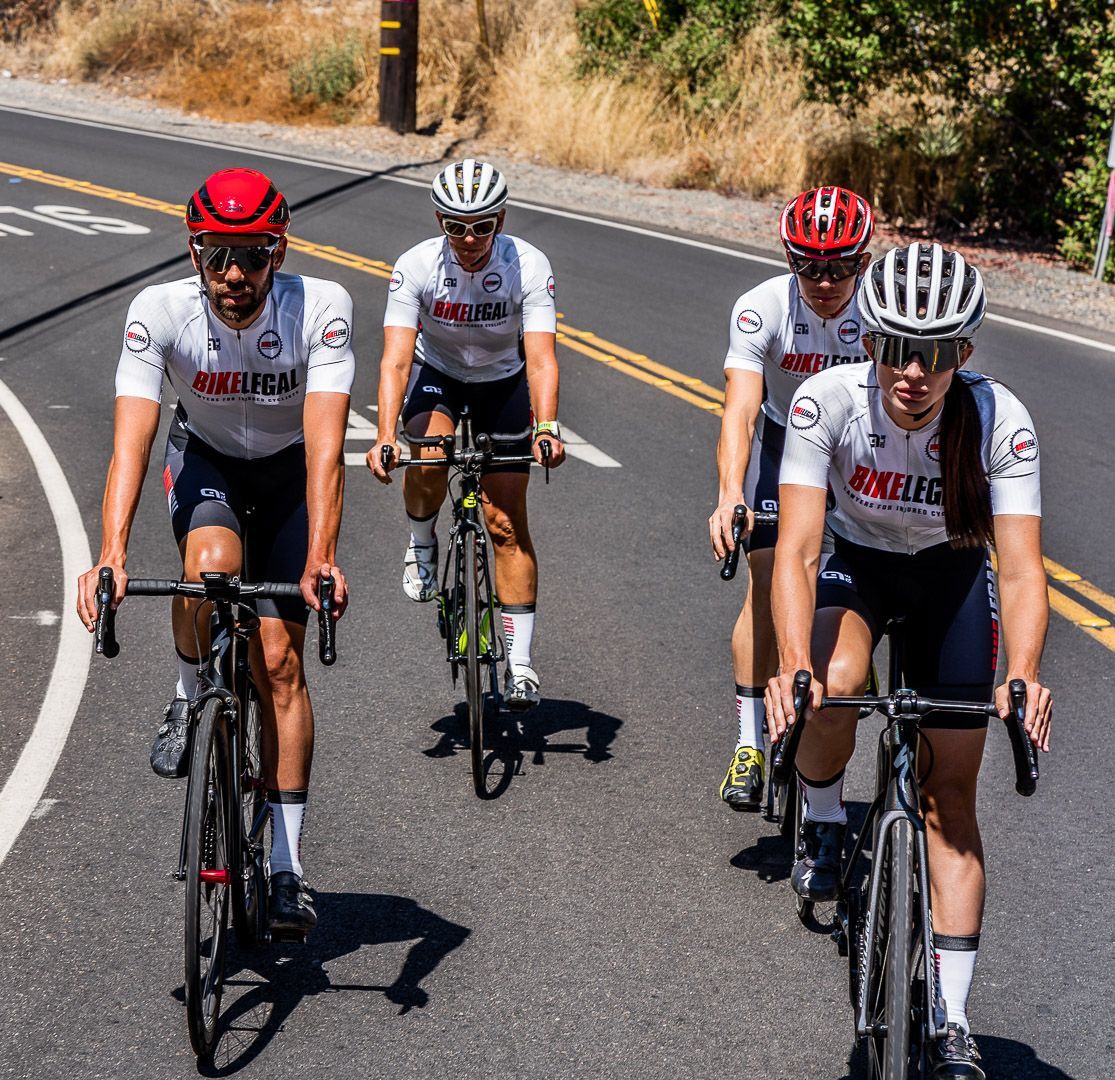Self-Driving Car Crashes with Bicycles: Liability, Causes, and Safety Tips
Follow us on
social media!
What happens when the car that hits you has no driver?
That’s not science fiction—it’s happening now. In San Francisco, a driverless Waymo taxi recently struck a cyclist in broad daylight. Minor injuries, sure. But what if the outcome had been worse?
In this guide, we break down:
- "How self-driving cars work—and why they have trouble detecting cyclists
- Who’s legally responsible when an AV crashes into a bike
- Actionable safety tips + what to do after a crash with an autonomous vehicle
The Rise of Autonomous Vehicles: What Are They?

Self-driving cars are no longer test concepts locked in a lab. They’re already on our roads—watching, predicting, reacting—without a human behind the wheel.
These autonomous vehicles (AVs) rely on a mix of hardware, software, and AI to make real-time decisions. From Tesla’s Autopilot to Waymo’s robotaxis, AVs are being tested and deployed around the world, reshaping how we think about road safety and accountability.
Sensors & Hardware
- LiDAR: Detects objects, distance, and movement.
- Cameras: Recognizes road signs, traffic lights, and lane markings—critical for lane control and obeying signals.
- Radar: Tracks speed and distance of nearby vehicles and objects, especially useful in poor visibility.
- Ultrasonic sensors: Assist in short-range detection for parking and low-speed navigation.
Software & AI
- Machine learning algorithms: Interpret real-time data to make driving decisions.
- Computer vision: Help recognize pedestrians, cyclists, and road conditions
- Predictive models: Anticipates movements of pedestrians, cyclists, and cars
Connectivity & Mapping
- GPS + HD maps: Provide precise location data and real-time navigation
- V2X (Vehicle-to-Everything): Enables AVs to communicate with infrastructure, other cars, and pedestrians for safety.
AV Adoption and Real-World Use
Self-driving cars are becoming more common in ride-hailing, last-mile logistics, and even personal commuting in some urban areas. However, widespread adoption still faces challenges, including:
- Testing limitations
- Local regulatory pushback
- Concerns about accident liability and ethical decision-making
While the technology is improving, the roads remain unpredictable, and cyclists are often caught in the middle.
Self Driving Car Accident Statistics: What the Data Shows
Self-driving cars promise precision. No drunk drivers. No distractions. But more control doesn’t mean fewer crashes—especially for those on two wheels.
Let’s talk numbers.
📊 How Safe Are Autonomous Vehicles?
Based on reports submitted to the NHTSA, the National Transportation Safety Board, and the California DMV, here’s where AVs stand:
- Autonomous vehicles (AVs) had a crash rate of 26.3 per million miles in 2022
- Traditional cars had a far lower crash rate: 1.9 per million miles
- In California alone, AVs saw 96.7 crashes per 1,000 vehicles, while human-driven vehicles averaged 7.0 per 1,000
So, while AVs are better at following rules, they're not immune to crashes.
📌 And these are just the reported incidents. Crashes that don't require police intervention or aren’t documented by AV companies often go unreported.
🚴♂️ Driverless Car Crashes with Cyclists and Pedestrians
In 2022, autonomous vehicles (AVs) were involved in at least 10 incidents with vulnerable road users, including cyclists, pedestrians, and e-scooter riders. Those numbers reflect broader concerns, as seen in recent cyclist death statistics. Many of these incidents occurred in urban areas, where AVs typically operate, and involved low-speed collisions.
Although low-speed accidents may cause minor damage to vehicles, they can result in serious injury for cyclists. The issue? AVs still struggle with:
- Predicting cyclist behavior
- Detecting hand signals
- Interpreting unpredictable movement
📉 Which Companies Have the Most AV Incidents?
ADS and ADAS refer to whether a company uses vehicles with Automated Driving Systems (ADS) or Advanced Driver Assistance Systems (ADAS).
- ADS: Designed to take over all driving tasks with little to no human interaction.
- ADAS: Designed to assist the driver when driving, enhancing control and safety.
The NHTSA crash data (June 2021–June 2024) revealed 3,979 incidents involving AVs and ADAS-equipped vehicles. Of these:
- Tesla accounted for 53.9% of all reported incidents, with a total of 2,146 crashes, all involving Level 2 ADAS (driver-assisted, not fully autonomous driving)
- Waymo, GM, Cruise, and Zoox followed with hundreds of reports each
Here’s the breakdown of the top 10:

🔗 Source: NHTSA ADS/ADAS Crash Data
San Francisco Cyclist Injured by Driverless Taxi
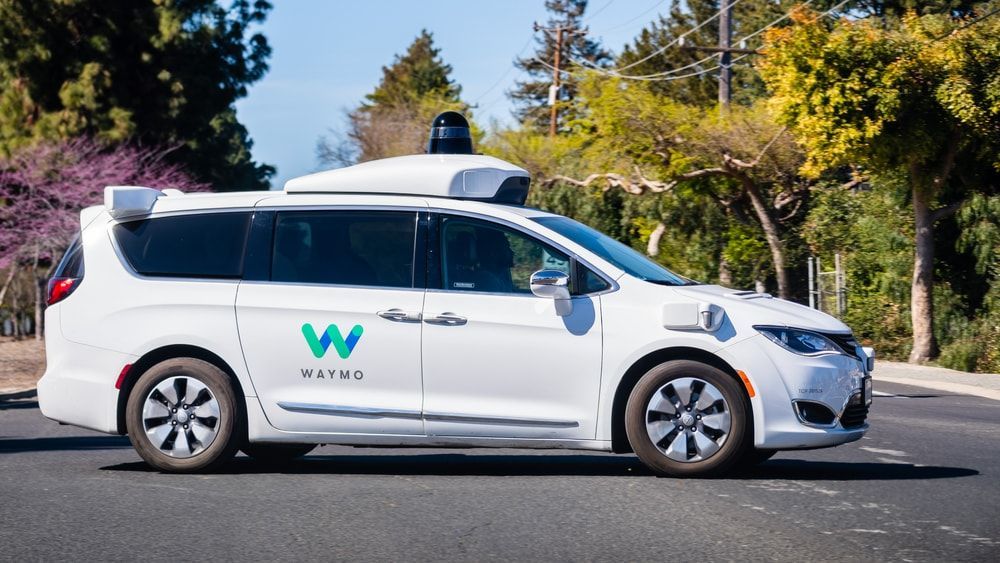
Even with all the sensors and algorithms, a self-driving car missed what a human wouldn’t have—a cyclist tucked behind a truck.
On February 6, 2024, a Waymo driverless taxi collided with a cyclist at a four-way intersection in San Francisco’s Potrero Hill neighborhood. The car had no driver. The cyclist suffered minor injuries. And once again, autonomous vehicle safety was under review.
Waymo claimed the car had come to a complete stop when a large truck passed through the intersection. After the truck cleared, the cyclist, hidden behind it, suddenly made a sharp left turn. As the Waymo vehicle began moving forward, it hadn’t yet seen the cyclist. Despite hard braking, the robotaxi was unable to avoid the crash.
Waymo notified the police and informed regulatory authorities about the incident. Both the California DMV and the San Francisco Police Department launched investigations.
This wasn't Waymo’s first safety scare. In 2023, the company was involved in over 130 autonomous crash reports—most minor, but not all harmless. A previous incident resulted in the death of a dog, which the company described as “unavoidable.”
The real issue here? AVs are designed to detect everything and miss nothing. But this crash highlighted a critical vulnerability: when a cyclist is hidden, moves unpredictably, or is obstructed by larger vehicles, the system may not always keep up.
Key Causes of Self-Driving Cars and Cycling Crashes
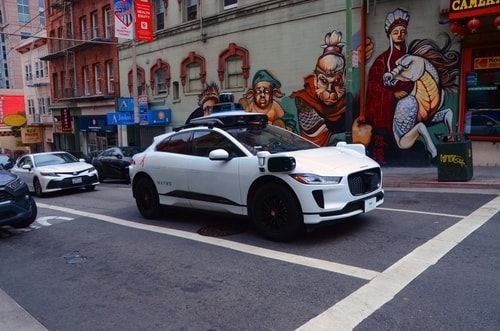
Autonomous vehicles might follow the rules, but that doesn’t mean they understand the road the way humans do—especially when it comes to cyclists. Here’s what’s getting in the way of safer interactions:
Cyclists Expect Human Reactions
We’re trained to look for subtle cues—eye contact, a wave, a nod—before crossing paths with a driver. But you can’t lock eyes with a robot.
Without visible intention or non-verbal feedback from AVs, cyclists are often left guessing: Will the car stop? Does it see me?
Sensors Aren’t Foolproof
AVs rely on cameras, radar, LiDAR, and ultrasonic sensors. But all of that tech still has blind spots:
- Low light or poor weather can interfere with camera feeds and LiDAR signals.
- Quick movements, like a cyclist swerving or signaling, may not be detected in time.
- Obstructions, such as trucks or parked cars, can hide cyclists until it’s too late.
Software Can Misjudge Human Behavior
Cyclists can move unpredictably—avoiding obstacles, merging into traffic, or making sudden maneuvers like standing on pedals at a stoplight. AVs don’t always get that.
- Algorithms struggle with non-standard erratic vehicle behavior
- Prediction engines may be trained more on cars than bicycles
- Split-second decisions—like when to brake or yield—can lag just enough to cause harm
Passenger Safety > Cyclist Safety?
Some experts suggest that AVs might be programmed to prioritize the safety of passengers over others, including pedestrians and cyclists.
This potential bias could stem from the training data used to develop these systems. Many models have been trained primarily on data from cars, making them less adept at handling situations involving cyclists.
The Infrastructure Isn’t Helping
Even the smartest vehicle needs a well-designed road to work with:
- Poorly marked or inconsistent bike lanes confuse AV navigation systems, - raising the same safety issues highlighted in the ongoing bike lane debate.
- Mixed-use intersections leave AVs without clear guidelines, increasing the risk of confusion.
- Roundabouts, merge zones, and shared spaces create additional risks for cyclists.
In short: AVs aren’t just fighting hardware or code—they’re navigating a system that was built for humans, by humans. And cyclists often pay the price for that mismatch.
Who’s at Fault When an AV Hits a Cyclist?
Determining fault in a crash with a self-driving vehicle isn’t black and white. Unlike typical bike accidents, you’re not dealing with a person—you’re dealing with code, sensors, and company liability. Here's how fault is usually determined:
Shared Responsibility Is Common
Many states apply comparative negligence, meaning both parties share the blame.
Example: If a cyclist runs a red light, but the AV fails to brake in time, both could be considered partially at fault. Your compensation could be reduced depending on your share of the blame - just like in cases where a car driver hits a cyclist and liability is split between both parties, as outlined in driver vs cyclist accident scenarios.
What Evidence Matters Most
The biggest advantage in an AV crash? The data.
- Surveillance footage and dashcams can reveal angles missed by eyewitnesses
- AV data logs act like a black box, recording crucial information such as speed, braking force, object detection, and timing.
- Police reports and witness statements still play a role, especially in areas with no cameras
P.S. Insurance companies are always looking for ways to reduce your claim. Read this guide on what not to say to an insurance company after a bicycle accident to ensure you protect your rights and maximize your compensation.
Traffic Laws Set the Ground Rules
Right-of-way is crucial. If you were crossing legally and the AV failed to yield, the company operating the vehicle could be fully liable.
However, if you were riding outside a designated bike lane or disregarding traffic signals, things become more complicated. Local traffic laws come into play—who had the green light, who was turning, and whether you were in a bike lane at the time of the collision.
What If the AV Itself Failed?
Sometimes the vehicle's system is to blame—not the cyclist, not even the driver (if present).
Manufacturers may be held responsible if:
- Sensors failed to detect the cyclist
- The braking system didn’t respond fast enough
- The software failed to recognize the cyclist or made an incorrect decision
There have been real cases where AV companies were sued for these exact failures.
Bottom line: Determining fault in an AV-bike crash is more than just figuring out “who hit who.” It's about reconstructing a digital trail—one that may point to a human mistake, a technical failure, or a bit of both.
How Cyclists Can Stay Safer Around AVs
Riding near self-driving cars? You shouldn’t have to guess if the vehicle sees you. But until AVs consistently detect and react to cyclists, you’ve got to do the thinking for both parties. Here’s how to stay safer on roads shared with autonomous vehicles:
Make Your Movements Predictable
Stick to bike lanes or stay to the far right if none exist. AVs are programmed to follow consistent traffic patterns—swerving suddenly or riding against the flow can disrupt their system. That's why laws like the 3-feet passing rule are in place in many states.
Want the vehicle to react predictably? Start by being predictable yourself.
Be Hyper-Visible
Sensors are smart. But they still struggle in bad weather, low light, or shadowy intersections.
Here’s what helps:
- Wear bright, reflective gear
- Use front and rear lights, especially in fog, rain, or dusk
- Consider adding reflective tape to your helmet and wheels
These aren’t just for cars—they improve your readability to machines as well.
Signal Clearly, Follow the Rules
AVs may not always interpret your hand signals, but it’s still important to use them. Many systems are trained to recognize universal gestures, like a left-hand turn signal, especially when you're crossing lanes.
And don’t forget the basics:
- Stop at lights
- Yield where required
- Maintain a safe distance from vehicles and curbs
In tight spaces like roundabouts or unmarked intersections, assume the AV might not detect you at all—especially if you're emerging from behind another vehicle.
What To Do If an AV Hits You
Even if it’s a “minor” crash, treat it like any other serious accident. Self-driving technology introduces a unique legal layer, and you'll need solid documentation to protect yourself.
Here’s your go-to checklist:
1. Check for Injuries & Call 911
- If you're hurt, seek immediate help—even if symptoms are subtle (e.g., headache, dizziness, soreness)
- Get checked by a medical professional so you have official records for claims
2. File a Police Report
- Tell the officer everything—don’t downplay the crash
- Make sure they document the AV status (driverless or human-supervised)
- Ask for a copy of the report for your records
3. Gather On-Scene Evidence
Take photos or videos of:
- The AV (license plate, model, company branding)
- Your bicycle and visible injuries
- Road, traffic signs, weather, and lighting conditions
Ask nearby witnesses for their contact information. Gathering and preserving evidence can be crucial to your claim.
Was there a safety driver? Make a note. Was it fully driverless? Make sure that's documented too.
4. Get AV Details
You’ll want the same info as a traditional crash—plus a few extras:
- Company name (Waymo, Cruise, Tesla, etc.)
- Vehicle ID or VIN
- Safety driver details, if present (license, insurance)
5. Don’t Talk to the AV Company Alone
Their reps may contact you. Do not:
- Admit fault
- Sign anything
Treat it like dealing with any insurance company: everything you say can impact your case.
6. Talk to a Bicycle Accident Lawyer ASAP
Autonomous vehicle crashes involve complex liability issues—the AV company, software developers, or even city infrastructure could be at fault.
A self driving car accident lawyer can help determine who is responsible and fight for fair compensation for medical bills, lost wages, and bike repairs.
Read our guide on what to do immediately after a bicycle accident to protect your rights and avoid common mistakes that could affect your claim.
Insurance and Compensation for Autonomous Cars & Cycling Crashes
If you’ve been hit by a self-driving car, the insurance process isn’t as straightforward as a typical fender bender. You're not just filing a claim against another driver—you might be up against the AV company, its insurer, and possibly even its tech providers.
Let’s break down who’s on the hook—and how you can get what you’re owed.
Who Covers the Damages?
It depends on fault.
- If you were at fault—say, riding against the traffic or running a light—personal or health insurance may apply.
- If the autonomous vehicle caused the crash—due to slow reaction time, failure to yield, or sensor misread—the company’s liability insurer will likely cover:
- Medical bills
- Property damage
- Lost wages
But getting there requires evidence, and how you talk to the insurance company can make or break your case. Here’s what not to say to an insurance company after a bike crash.
Filing a Personal Injury Claim as a Cyclist
Even if the AV was only partially at fault, you may still be eligible for compensation.
That includes:
- Hospital bills and follow-up care
- Income lost during recovery
- Long-term therapy or disability-related expenses
- Pain and suffering
Some regions have no-fault insurance systems where cyclists can claim compensation regardless of fault.
What If the Tech Failed?
Now here’s where it gets complex. If an AV malfunctions due to defective software or hardware, you may have grounds for a product liability claim—against the manufacturer of the vehicle.
These cases are typically handled under product liability laws, and you’ll need a self-driving car accident attorney to pursue them. But they can lead to significant payouts if proven.
Insurance around AV crashes is still evolving—but one thing’s clear: you have options. You just need to know which route leads to a fair outcome.
Ride Protected. Ride Safe with Bike Legal
At Bike Legal, we don’t just practice law—we ride too. Our team understands what it's like to share the road, dodge distracted drivers (and now robots), and navigate the aftermath of a crash.
We know the legal system. We know cyclists. And we’ll fight to get you the compensation you deserve.
📞 Call 877-BIKE LEGAL (877-245-3534) for your free consultation. Let’s protect your rights—and your ride.
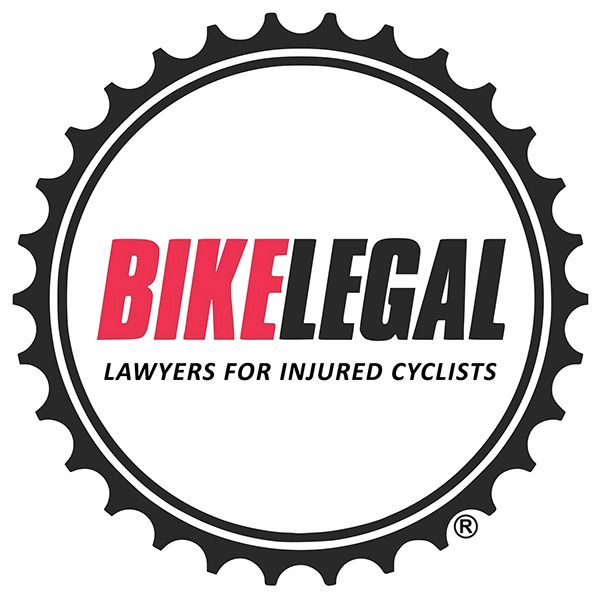
FAQs: AV Accidents Involving Cyclists
Q: How many accidents are caused by autonomous vehicles?
As of early 2025, the California DMV reported over 800 collisions involving AVs. The NHTSA has also recorded 3,979 incidents involving AVs and advanced driver-assistance systems (ADAS). While not all of these incidents were caused by the AVs, a growing share involved cyclists, pedestrians, and other vulnerable road users.
Q: What’s the most common accident scenario in self-driving cars?
Many AV crashes happen in urban settings, particularly when the vehicle is merging, turning, or responding to unpredictable human actions—like a pedestrian crossing the street outside of a crosswalk or a cyclist swerving to avoid an obstacle. In some cases, AVs either failed to react quickly enough or misinterpreted the situation altogether.
Q: Will autonomous vehicles reduce accidents overall?
That’s the goal. But we’re not there yet. AVs may eventually outperform humans in steady, predictable driving conditions, but they still struggle with edge cases, such as cyclists maneuvering through traffic or responding to informal road signs. Until these issues are addressed, accidents will continue, particularly in complex urban settings.
Q: Is autopilot safer than human drivers?
Tesla’s data suggests its Autopilot system has a lower crash rate per mile than average human drivers. But independent reports—and NHTSA’s own crash database—show that Autopilot-related incidents are rising, often due to over-reliance or misuse. Additionally, Autopilot is not fully autonomous, and the driver remains responsible for control.
